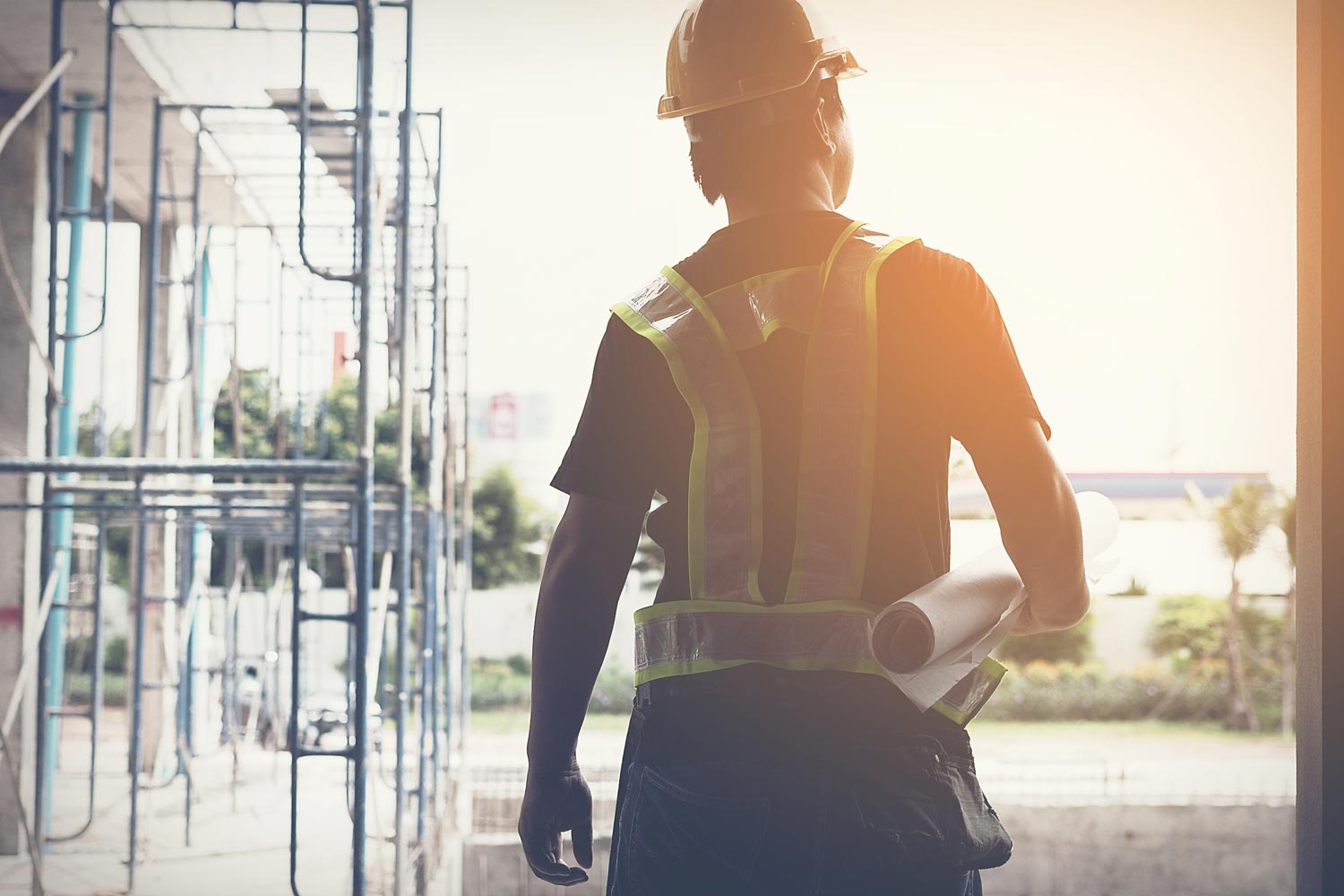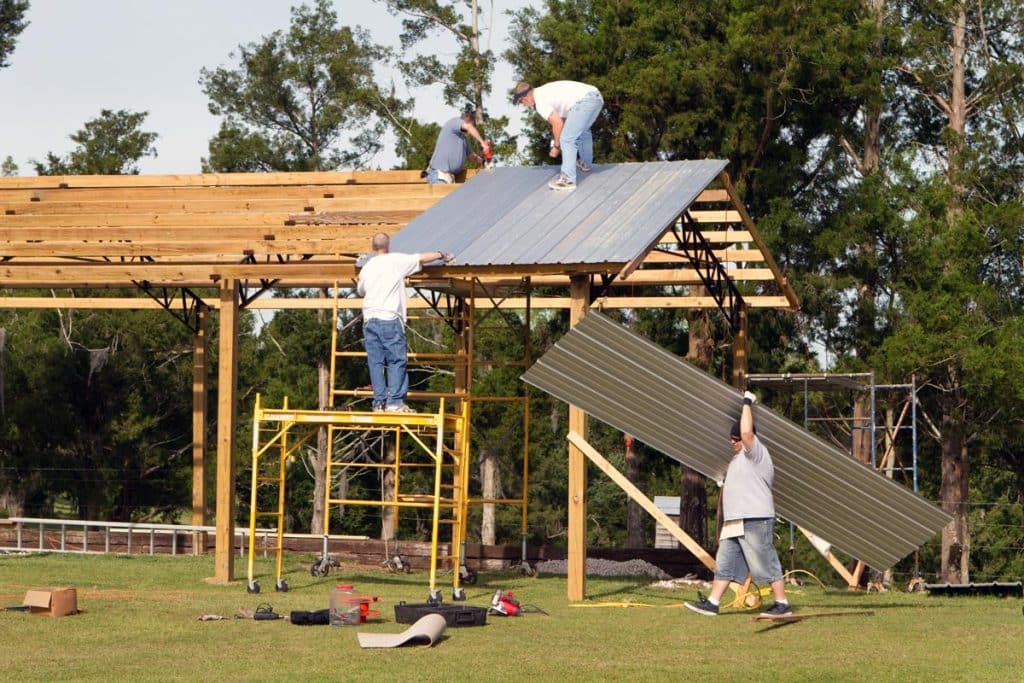
If you are building your own barndominium, you are going to find yourself facing an ambitious, complex construction project. You do not need to be daunted, however. If you hire a general contractor to help you oversee construction of your barndo, you can rest assured that your project will move forward in a safe and timely fashion.
In this guide, we will give you tips to help you choose a general contractor for building a barndominium. But first, let’s explain a little about what general contractors do and why they are important when constructing a barndo.
What is a General Contractor?

The general contractor is the person who manages and supervises a construction project such as a barndo.
Working underneath the general contractor are various subcontractors. These are professionals with specialized skill sets whose own scope of responsibilities is smaller.
It is the general contractor that brings together all of the professionals, equipment and materials for the project, ensuring that it reaches completion.
Why Do You Need a General Contractor for Your Barndominium Construction?
Here are some reasons to bring a professional general contractor onboard when building your barndo, rather than attempting to oversee your project yourself.
- Leave the hard work of coordinating with all of the sub-contractors to someone who gets paid to do it.
- A general contractor may have established relationships with reputable and skilled sub-contractors. Reaching out through their network, they can bring the best professionals to work on your barndo.
- The general contractor knows how to proceed with construction safely, reducing the chances of costly accidents.
- With a general contractor on your side, your project will be completed more quickly with fewer mistakes.
- Ultimately, you will save money by hiring a general contractor. Again, mistakes and accidents are expensive. A general contractor will help you bypass all kinds of potential pitfalls that might swallow you up if you try to oversee your project by yourself.
How are Barndominiums Built?
The most common method for constructing barndominiums is to use steel posts and girders. Lifting these into place requires a crane. That is another good reason to hire a general contractor; they can bring the crane and other equipment and machinery to the worksite, sparing you from having to find everything.
Construction Time
It usually takes about six months to build a barndominium. That being said, some barndo projects can be completed in about half that time. The complexity and size of the barndo as well as the professionals you work with all will impact the time till completion. Hiring a general contractor is a great way to shave off significant time.
What to Look for When Choosing a General Contractor

Now that you understand the basics of barndo construction and the importance of a general contractor, let’s go over some key considerations when you are deciding on a contractor for your own barndo project.
1. Relevant experience
The more experience a general contractor has, the better. That much goes without saying. But it is vital to make sure that the experience they have is specific to your type of project.
That means they should actually have built other barndos in the past, not just regular houses. Moreover, it is ideal if they have built the type of barndo you want, i.e. steel construction or pole construction.
2. Background check
Anyone can claim to have extensive experience doing anything—but a professional general contractor needs to be able to prove it.
Conduct a background check on the general contractor you are considering. Do the following:
- Check that the contractor’s license is valid, current and in good standing.
- Request a list of projects the general contractor has overseen, especially barndo projects.
- Contact the clients from those past jobs and ask them about their experiences in detail (if you can pick these on your own, rather than just calling the references given to you, that is best).
- Go see a couple of past projects if you have the chance. At the very least, you can check out their exteriors. If the owners are willing, you might also be able to look inside.
- Check the contractor’s BBB rating.
- Look up reviews of the general contractor online (reviews on third party websites, not testimonials on the contractor’s site).
This step is going to take you some time and legwork, but it is going to save you a lot of time, money and pain if it helps you avoid doing business with someone who doesn’t know what they are doing.
3. Local building codes and zoning requirements
The general contractor you work with needs to know the building codes and zoning regulations for your site inside and out. They can look things up, of course, but it is better if they already have extensive experience working within those local requirements from past projects. For that reason, it is usually best to pick someone who has been working in your area for a long time.
4. Materials
If youare ordering a barndo kit on your own, and then hiring a general contractor to assemble it for you, you do not need to focus as much on this consideration; you already know the materials that will be in the kit.
But if the general contractor is the one ordering a building kit, or if they are not using a kit at all, it is important to inquire what materials they will be using and where they will source them from.
5. Subcontractors
Just as important as materials is personnel. Ask the general contractor what subcontractors they will bring to your project (if you did not already select some or all of them yourself).
If you have a solid foundation of trust with the general contractor, you can probably trust their choice of subcontractors. But you may still want to think about researching the subcontractors individually, especially if you have never before worked with this particular general contractor.
6. Transparency
When you are interviewing a general contractor, ask them as many questions as you can think of, both about your specific project and how they work. Inquire into their history as well, and try to ask them some difficult questions (i.e. “Tell me about a time when something went wrong during a project, and how you deal with it”).
If the general contractor gives you transparent, detailed, clear answers, that is great. But if they start dodging questions, that is a bad sign.
It is also not a good sign if the contractor becomes impatient with your questions. Building a barndo is a large and expensive undertaking; you have a lot on the line in terms of your financial and emotional investment. You have every right and reason to ask extensive questions and expect in-depth replies.
7. Communication
Ask the general contractor about how they will communicate with you throughout the project. Find out what communication methods they offer. Can they email you? Text you? Call you? Are they willing to adjust their communication methods to your preference?
There are going to be many points through the building process where they will need to be able to reach you quickly in order to move the project forward without delays, so this is essential. Sometimes, if something goes wrong on the worksite, they might need you to make a decision. You do not want to miss your chance to have a say in what happens next.
During your initial contacts with the general contractor, you should also take note of how quickly and reliably they respond to you when you reach out to them.
Additionally, you should study how skilled they are at communicating. Are they clear and specific when they talk to you, or do they speak in broad, vague terms? When they get frustrated, do they remain polite and effective?
8. Overall Demeanor
Most of what we have focused on are things you can assess relatively objectively. But you should also pay attention to your subjective feelings and impressions when you are assessing general contractors.
It may not feel rational if something seems “off” about a general contractor, but you should listen to your gut. When our instincts shout at us to avoid someone or something, there is often a reason, even if we are not consciously aware of it at the time. Move on to other candidates, and keep interviewing until you find someone that feels right for your project.
9. Budget
Of course, budget is also a factor when you are choosing a barndominium general contractor. Some general contractors charge more than others.
That said, there is sometimes a good reason for price differences. For example, costs might be higher with a general contractor that uses higher quality materials, or who has more experience.
You will need to consider both the budget you have available and your priorities. Remember, you can cut costs elsewhere on your project in order to pay more for a better general contractor. It may be worth it.
10. The Contract
Before a general contractor begins working on your project, they will provide you with a contract. This is the agreement that includes details such as an estimated timeline, an estimated budget, a payment schedule, workmanship guarantees, material guarantees, and responsibilities of various parties.
Read over the contract very carefully. If there is anything missing or that you are unclear on, you can request a revised version. You also can negotiate things you do not like in the contract until you reach an agreement you are both happy with.
If you cannot settle on a contract that satisfies you, it is not too late to back out. Simply choose a different contractor that you feel comfortable proceeding with.
Find an Experienced General Contractor for Your Barndo Build
Hiring a general contractor is an investment that will save you a good deal of time, money and effort during the construction of your barndominium. Now you know what to look for in one. If you still are not sure where to begin in your search for the right contractor, take a look at our recommended general contractors for barndominiums below.
Our kits are priced between $15 to $35 per sq ft
Pricing varies depending on size, build complexity, location, DIY or Turn-Key construction.
"*" indicates required fields
Most popular sizes: 40×60 (2,400 sqft) – 50×60 (3,000 sqft) – 30×50 (1,500 sqft) – 60×80 (4,800 sqft)

